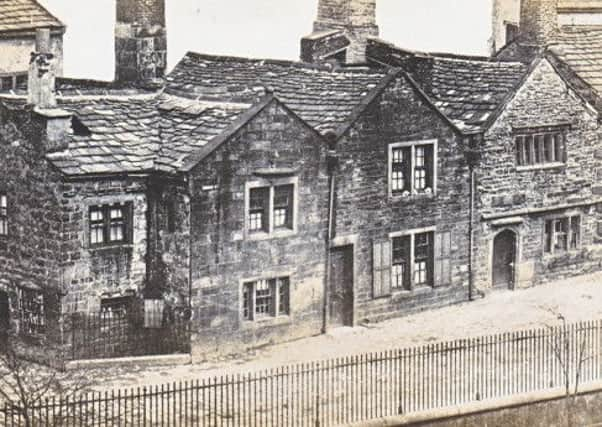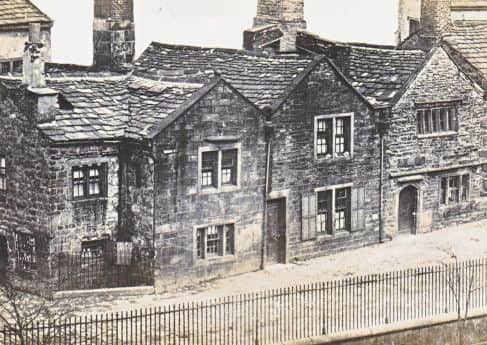Burnley’s shopping past


I recently wrote an article about the importance of shopping in Burnley in the past. The general thesis, though I would have to admit I got side-tracked a little – and not for the first time, I hear you say! – was that the shops were, particularly in the inter-war years, major employers.
The proof I gave concerned the number of shops in the food and drink sectors. I did not mention the other areas of retail activity but I know some of you were surprised by the figures I gave you – well over 400 confectioners, and a similar number of grocers.
Advertisement
Hide AdAdvertisement
Hide AdOf course in these years – the 1920s and 1930s – most of the shops were very small. Often they were “corner shops” serving only a few houses and the stock on their shelves depended on the wealth (or lack of it) of their customers, most of whom would have lived only yards away.


I remember, when I was at university, having to read Robert Roberts “The Classic Slum”. It was a book I was not looking forward to studying. I expected it to be worthy but dry but was surprised to find the book was eminently readable. This was fortunate as I had to lead a seminar on the subject, in a working class part of Salford, though, for some reason, I felt I could not relate to Salford, though I could to Manchester’s equivalent of Burnley’s Irish Park.
I picked out a number of particularly moving passages and the one that stood out, to me, was the story related of a woman, living in a poor area of the city in the early 20th Century. She was crushed by poverty and the story tells of her futile attempts to set up a small shop. She made a few cakes and placed them on a small plate in her front room window in such a way that her neighbours, passing along the street to their own poverty-stricken homes, could not miss them.
The days went by – and though she only wanted a few coppers for the whole plate, the little cakes remained unsold. Thus was broken her remaining amount of “spirit” she had left. It was her last desperate attempt to make something of the cruel hand she had been dealt, she knew not by whom.
Advertisement
Hide AdAdvertisement
Hide AdHer enterprise started with all the optimism of something new. The little confections were, in her mind, a passport to a better way of life. Imagine what it must have been like, when she realised her plans had failed, for her to remove the plate from her window – the destruction of her dreams, the realisation that whatever else life might throw at her, it was going to be a pitiable struggle until she, one day, would join the legions who had preceded her to a pauper’s grave.
When I was preparing for the seminar I spent time at home in Burnley where I was helping a family friend in his educational bookshop at the corner of what was then Sandygate and Accrington Road. To get there I had to walk the length of Sandygate itself. It was much longer in those days stretching from its junction with St James’s Street to Accrington Road and each day I walked passed the old redundant mills, the old jute factory on the canal bank, John Watts’ cotton waste mill at Clock Tower, the old Neptune Inn and the tiny cottages just below the Trafalgar Street junction.
As I have said, I did not know Salford so I imagined that little cake shop in one of the little cottages of Sandygate. It brought the tragedy of what had happened in the city home to me. The result was that, at the seminar, I presented my very first slide show – card bound photographic dia-direct slides, black and white ... and very effective they were, too.
Some of my seminar group had not experienced scenes clearly like the ones depicted on those slides of Sandygate. My colleagues could not believe the images – large, dark mills, dirty canal, tiny run down cottages, taken on a wet Sunday morning – were only days old.
Advertisement
Hide AdAdvertisement
Hide AdI had travelled home, one weekend, just to get the pictures and to ask my Dad if he knew where I could get a simple projector. I knew he would and, as Dad’s always do, he found me a small one I could easily take to Manchester on the bus. The slides, I think, I picked up from Boots, and after a few practice sessions in my room at my Hall of Residence, I was ready to give my presentation.
I learned, from that, just how powerful images can be, especially if they are well chosen. The ones I took were not of Salford, or any part of Manchester, but they served their purpose. Incidentally, I was “up front” about the pictures being of Burnley. There were a few little tired shops in Sandygate in those days; one of them a small newsagent’s, another a tiny abandoned grocer’s. I had pictures of both of these shops together with images of a number of the little cottages in the same street, some equally abandoned, no curtains, just rags at the windows, no gardens, the cottages directly on to the street. Anyone and everyone could peer in if they wanted to, and many doubtless did.
This week Retro is devoted to a number of Burnley shops. All the pictures are taken in the days before the coming of the supermarket and many are representative of the little businesses of a bygone age.
Some of the shops are a little better than others and one or two were quite good businesses in their day, but they constitute images from a lost world.
Advertisement
Hide AdAdvertisement
Hide AdThe pictures are, in other words, something of a mix. I am afraid they are not as powerful, or as dramatic, as the images I prepared for the seminar. I kept the slides for a few years but when I moved house I lost track of them. I might still have the slides but I have not seen them for years.
However, I present this selection to you because some of you have told me it would have been good to see some Burnley shops in last week’s “Peek into the Past” article rather than the crowd scenes I chose to publish.
Take your time to study these images it will be worth it.